Much like my TTAG colleague Brad Kozak, even though I hold a CCW, walking around with a pound and a half of .40 S&W clipped to my belt gets old faster than you can say “Pant’s On the Ground.” I just leave the weapon locked in my car or even securely stored at home. Thus, I am unarmed much of the time. A small, lightweight, easily-concealable gun would fix this, as I would no longer avoid carrying something too bulky to be convenient (and would avoid General Larry Platt’s rhythmic ridicule, to boot).
Of course, this “small gun so you’ll actually carry it” concept is old news, which leads to the subject of this TTAG gun review: the Iver Johnson Arms & Cycle Works Third Model “Safety Automatic” break-top .32 S&W double-action revolver. Think of it as one of the original low-cost, mass-market compact handguns. And then think of it as old.
Compared to iconic names like Smith & Wesson and Colt, Iver Johnson is not much more than a historical footnote except for very recently). However, if you’re going to be a footnote in U.S. arms manufacturing history, being an infamous one certainly makes things more interesting, a feat Iver Johnson achieved as a result of its revolvers being used to assassinate both President William McKinley in 1901 and Senator Robert Kennedy in 1968.
Being the antithesis of someone who would want to do politicians physical harm, I went about testing this 19th-Century Kel-Tec equivalent using nothing more than a paper silhouette target on which to unleash the little gun’s fury. Before testing the diminutive .32, I made sure to have an experienced gunsmith look it over and verify that it was fit to fire.

Speaking of safety, there’s the extremely important matter of ammunition. This gun is chambered in .32 S&W. Some people call this caliber .32 S&W “Short” or .32 S&W “Regular” because it should never be confused with the physically-longer .32 S&W Long cartridge (which won’t fit).
Additionally, it’s important to note that some Iver Johnson break-top .32’s (primarily the “First Models”) were designed to use cartridges made with black powder, an antiquated ammunition propellant that hung around until the widespread adoption of smokeless powder during the first few years of the 20th Century.
Never use a smokeless powder (i.e. modern) cartridge in a firearm designed for a black powder cartridge, as the pressure curve of the smokeless powder is very different and can absolutely screw up your entire day (or your gun, or your hand, or the rest of your life).
Fortunately, my test gun was a “Third Model,” which possessed a “G” serial-number prefix indicating that it was produced between 1915 and 1921 (and therefore designed for modern, smokeless gunpowder).
This made the whole ammo thing easier—except for the fact that finding .32 S&W ammo is sort of a tricky proposition these days (gun shows and mail order outlets are typically your only hope, and good luck finding a manufacturer other than Remington). Nonetheless, persistence and clean livin’ eventually paid off, and before a cat could lick it’s . . uh . . . paw, I was at the range with a gun older than the age my Granddaddy would be if he were still here carryin’ derringers and smokin’ Pall Malls.
As I pulled the latch (located on top of the gun, just in front of the hammer) and began tilting the barrel and cylinder downward, I was greeted by the casing extractor mechanism rising up from the center of the cylinder like an amusement park thrill ride. Once the barrel stopped (90 degrees from where it started, now pointing straight down), the extractor slammed back down into the cylinder to await the first five cartridges I planned to shoot.
After all five rounds were firmly seated (the fit is slightly snugger than modern revolvers), I returned the barrel and cylinder to the upright position (making damn sure everything was securely latched), wrapped my hands around the hard rubber “owl head” grips, and prepared to fire.
Aiming dead-center at the target was a little more challenging than I had expected. You don’t need to know much about “pocket guns” to know that their sights are generally nothing more than tokens. The Iver Johnson revolver is no different; however, I expected that the rear notch/front blade arrangement would be far more useful than it was, as evidenced by the relatively long sight radius.
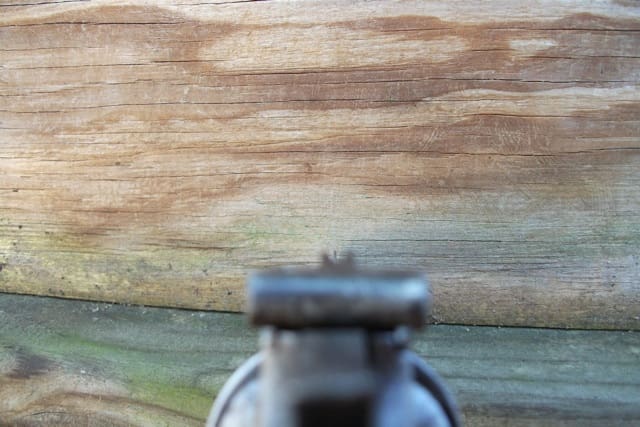
I was wrong. The front blade, though generously tall, is Olive Oyl-skinny, and acquisition took much longer than one would expect. Even back then, gun manufacturers seemed to regard compacts as point-and-shoot affairs.
But point-and-shoot was not what I had come to the range to do, and with the little break-top aimed to the best of my ability, I squeezed the trigger to light off the first round.
“Pop.”
“Pop?” Guns aren’t supposed to go “pop.” They’re supposed to go “boom!”
Oh well. This one goes “pop.” Truly, it sounded more like some of the cap guns I had when I was a kid than an assassin’s weapon. Recoil was cap-gun-non-existent, too, but unfortunately that didn’t help the gun’s accuracy, as I ended up with target groupings (at seven yards) at least 50% worse than what I’m routinely capable of with a Smith & Wesson J-Frame .38 (which has a much-shorter one and seven-eighths-inch barrel compared to the Iver Johnson’s three-incher).
I expected—and received—slightly better groupings when manually cocking the firing-pin-less (ahead of its time!) hammer and firing single-action shots each time. But they were still nothing to write home about.
Overall, the little break-top .32 performed very, very well for a gun flirting with the century-old mark. Other than two or three bad rounds (out of the 50 I fired), the only real problem involved the “automatic” extractor’s tendency to let go of the casing’s rim just as the cylinder gets vertical, causing the casing to drop back down into the cylinder bore where it fits so tightly that no fingernail known to man can get it out (also, the extractor is on top of it at this point, holding it in). This happened with such frequency that a pocket knife or tiny screwdriver should be standard range equipment anytime you fire one of these.
But for this gun (or really, pretty much any gun this age), the “anytime” referenced above shouldn’t be too frequently, if at all. Yes, it’s a real gun, and yes, it could perhaps defend your life if it had to. But its idiosyncrasies and ballistically weak chambering—not to mention its extreme age—should preclude it from all but historical duty or occasional fun.
Still, it’s a piece of small arms history, and the fact that so many of these little revolvers are still around and in firing condition is a testament to the quality that Iver Johnson imbued within even its most modestly-priced offerings a century ago. I wonder if anyone will be firing today’s Kel-Tecs a hundred years from now.RATINGS
(Out of five stars)
Style * * *
Half 19th-Century cowboy, half 20th-Century modern revolver. The look is not for everyone, but it’s cool in that “look how well engineered things used to be” sort of way.
Ergonomics (carry) * * * *
Very light, if a bit longish, but still easily packable. The grip could be more substantial. Is there a .32-caliber revolver on the market today that’s this thin?
Ergonomics (firing) * * * *
The double action trigger pull is a bit long, but once you get it started the effort is fairly consistent. The single action pull is great, and with the .32 S&W, recoil just isn’t there.
Reliability * * * *
Deduct one star for the extractor not working very well (but maybe it’s worn or maybe today’s casing rims are different than the old ones). Other than that, the fact that this 90-year-old gun fired 50 rounds without a real malfunction speaks for itself.
Customize This *
Uh, no. Antique gun folks would probably not even want the tarnish polished away.
OVERALL RATING * * * *
Low cost and quality lived together very happily in this compact revolver a hundred years ago, and the fact that they’re still going strong is worth four stars, easy.
Summary
Think of it as a “conversation piece” that you can take to the range and fire. And then think of all the people who were protected through the years because a dependable, effective little handgun was available in their price range and sized so that they could easily carry it.
Specifications:
CALIBER: .32 S&W (short)
FRAME: Steel, Nickel finish
CYLINDER: 5-round, integral with barrel
BARREL: 3″ steel
SIGHTS: Fixed rear notch, fixed front blade
HEIGHT: 3.25”
LENGTH: 4.12”
TRIGGER: Smooth
GRIPS: Hard rubber “owl head” (Iver Johnson trademark)
WEIGHT (empty): 13.5 ounces
MSRP: $4.50 to $6.00 (1897-1920 dollars)
CURRENT VALUE: $100-$300 (depending on condition)
Disclaimer
The opinions expressed within this review are those of the reviewer, and do not necessarily reflect those of anybody else, including TTAG. Neither the reviewer nor TTAG have received any considerations—either in the form of money, free stuff, tickets, t-shirts, trips or any other swag—in exchange for this review.
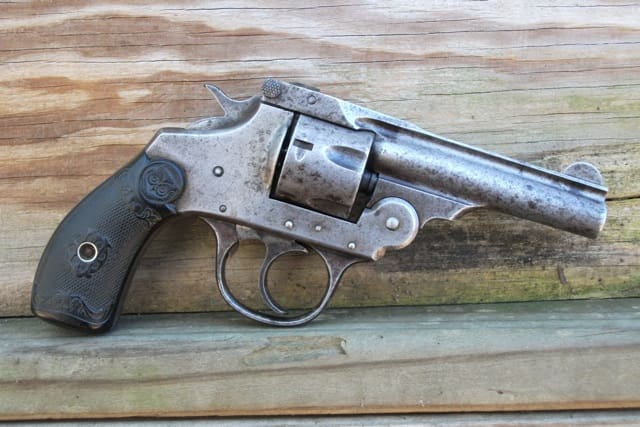
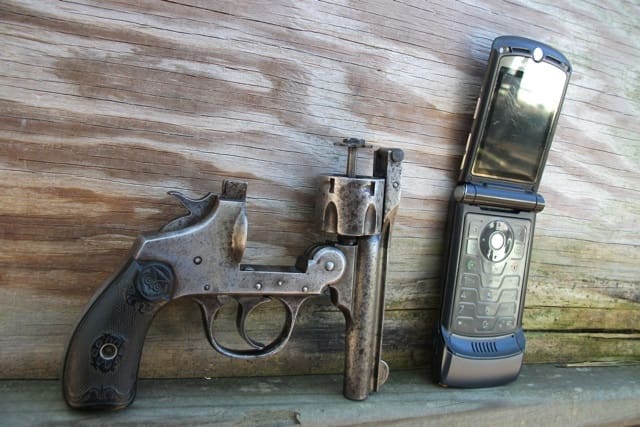
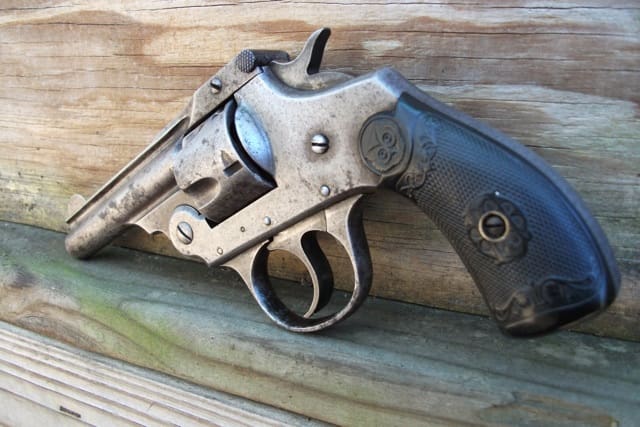
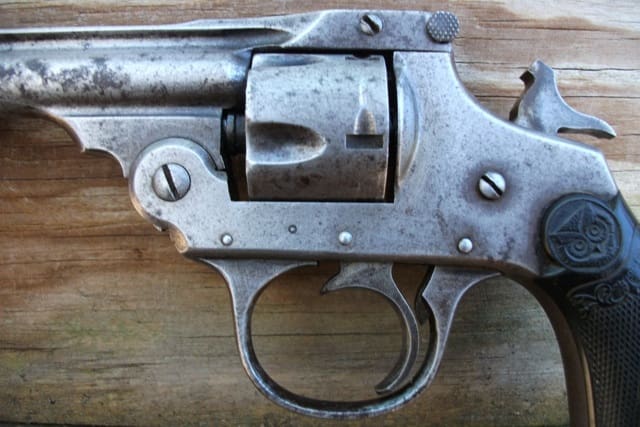
No comments:
Post a Comment